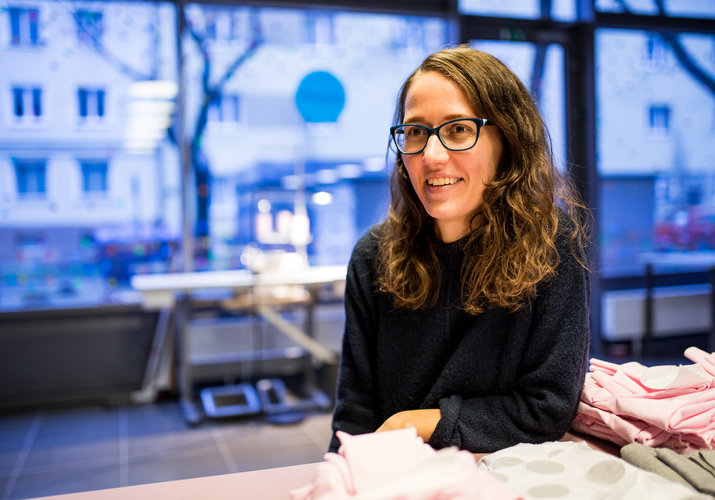The ZeroWaste (“Bezodpadu”) collection, created from fabric leftovers from the production of our squeaky T-shirts in our clothing factory, attracts much attention. Because designing and sewing clothes from small pieces of fabric is very time-consuming, we decided to introduce a new member to our team.
Barbora Mrňáková graduated in fashion design from UTB Zlín, Czech Republic. After a brief internship in Portugal, she joined us here in Bratislava. Just like Vlado Morávek, she is currently inventing a separate line within our ZeroWaste collection, which is already available for purchase in our Twin City Towers shop.
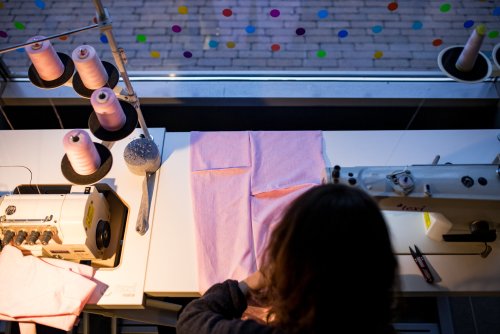
What are you currently working on?
Right now, I am designing new dresses and skirts for women and girls, as well as some new ZeroWaste dresses.
How does that work?
Together with Silvia we are thinking of new patterns, perfecting them, plus, we are trying to uplift our range of fabrics with regard to quality. We have also added some new dresses for women and girls in matching cuts. Also, we have introduced two new cuts for skirts. The whole portfolio is growing and getting bigger. We are also preparing new cuts for men, while updating the current ones.
The ZeroWaste collection has been created from simple fabric leftovers from the production of our squeaky T-shirts in our clothing factory. That means that every model is an original, because we are being given various pieces of fabric each time. They are never pieces of one color or pattern, etc. Every product is assembled from the currently available pieces, which makes this process very time-consuming. Based on my own experience, the average time to create one model – from drafting the design and choosing the materials, to its assembly into the final product – is 2 working days, i.e. 16 hours of work. Of course, that depends on the complexity of the design and the actual cut. It makes a huge difference whether I am working on a long dress or a T-shirt. As I said, we are limited by the pieces of fabric at hand, and every model is custom made. I may be using a basic sewing pattern of a dress, but I don’t exactly position the leftover pieces of fabric within it.
My way of work is normally to sew different pieces of fabric together, basically creating a new cloth, on which I draw the sewing pattern and cut out the respective pieces. This method grew on me the most, because it is creative and at the same time quick.
How does this collection evolve?
At the very beginning I was using the original pattern of a woman’s dress created by Vlado Morávek for the collection. As time passed, I moved towards a longer variant with ¾ sleeves, as well as T-shirts and skirts.
Also, when I was going through the available pieces of fabric, I found many relatively long, curled pieces of knit-ware, and wondered whether it would be possible to sew them together and get something going out of it. We decided to check it out and so the neck warmers and head-bands for the winter were born.
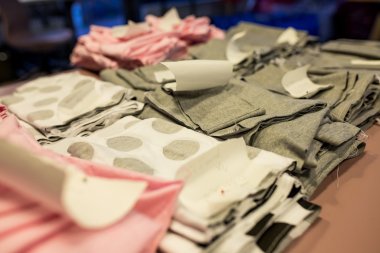
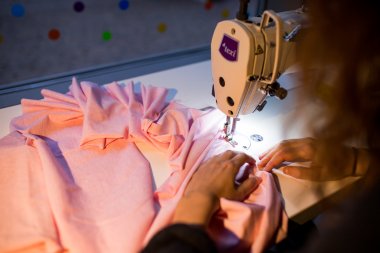
Is your current production similar to what you did before?
After my university studies I have been given the opportunity to undertake an internship and I decided to go for it, so I found a company in Porto, northern Portugal. For half a year my primary responsibility was the creation of sewing patterns. I sew product samples and tested them. We created technical drawings and descriptions, created sewing patterns and put everything into production. All of that taught me the little, technological things that need to be part of a sewing pattern. I had to learn to think in a way that was compatible with production workers at the factory.
When talking about creating clothes out of different geometrical patterns, I liked that before, too. Part of my thesis collection was also a very similar assembling of small pieces of fabric into specific models. The difference was only that I did not work with fabric leftovers per se, then.
How would you describe your current work?
At the beginning of my university studies I created minimalistic clothes, usually plain-colored, from neutral monochromatic colors. As time passed, I began to be interested in different textile production methods like embroidering, felt-making, knitting and weaving. My thesis included everything that I was interested in at that time, especially textile collage and text applied straight to fabric. When it comes to cuts, I prefer basic, more simple cuts, which I infuse with different techniques, usually the ones I like the most at that time. You can see it also in my current work for Pískacie, for example in the layering of graphical structures when combining and overlapping different kinds of stripes, using reverse stitching on the front side, or using machine embroidery.
How did you get in touch with Pískacie?
After my return from Portugal, I was looking at different job offers in the Czech Republic and later also in Slovakia. I saw a job advertisement from Pískacie and even though it was for a tailoress, I decided to reply to it. During the interview in Bratislava, we talked about the position and what it would actually include. We agreed that I take a couple of fabric leftovers and try to turn them into a dress. It took me two or three days but they were really pleased with the result. After that we only had to seal the details of our collaboration.
After I started at the company, we agreed that I and Vlado will work on our own separate models and we will see, where the whole ZeroWaste experiment will take us.
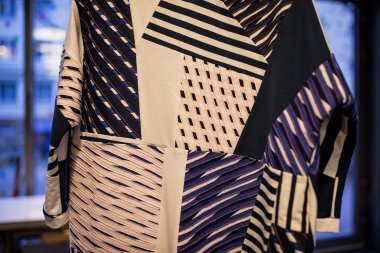
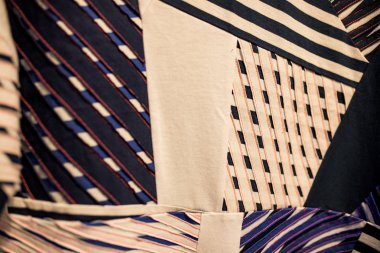
Where would you like the whole collection to go next?
In the very beginning, we talked about including also some light sweaters and such. I would also love to create some models for kids. Right now, it is primarily a woman’s collection, but we have had some good ideas for men’s fashion as well.
Are you following some companies or individuals who show interest in sustainable fashion?
I was not really well oriented in the Slovak market at first. Of course, I was aware of some big names in the Slovak fashion industry, but not so much of smaller companies from the sustainable fashion area. However, as soon as I started looking around, these brands popped up rather quickly. They are getting more and more… However, the idea of clothes recycling kind of grew on me, and I get involved through events like the Bagbet Swap, where I take part as volunteer.
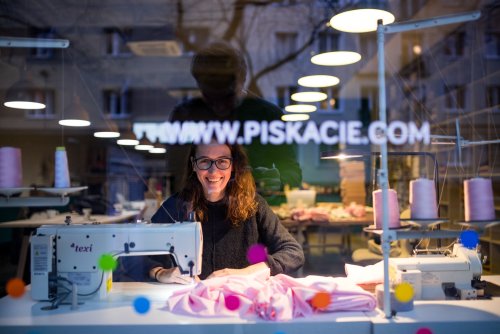
How do you like to spend your time outside of work?
I enjoy all those little events that focus on zero waste and local production, like the fairs in the Old Market Hall, Dobrý trh, the Pomalo festival, and various swaps. I also love reading and going to art galleries, and I enjoy going to the Lumière cinema and various film festivals.
Text: Martina Ráczová, Foto: Dávid Hanko




